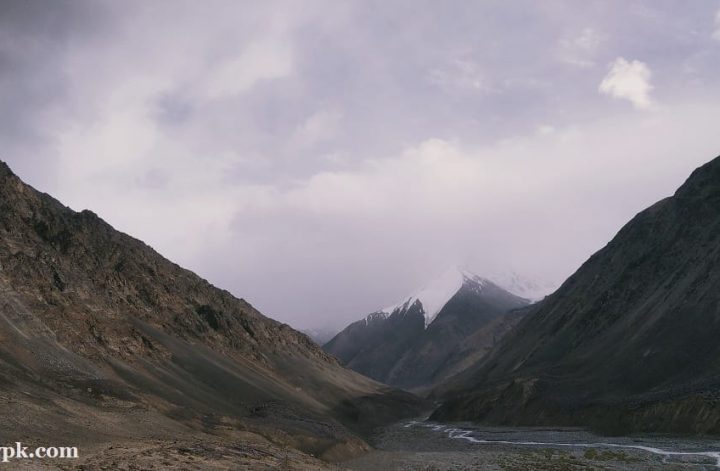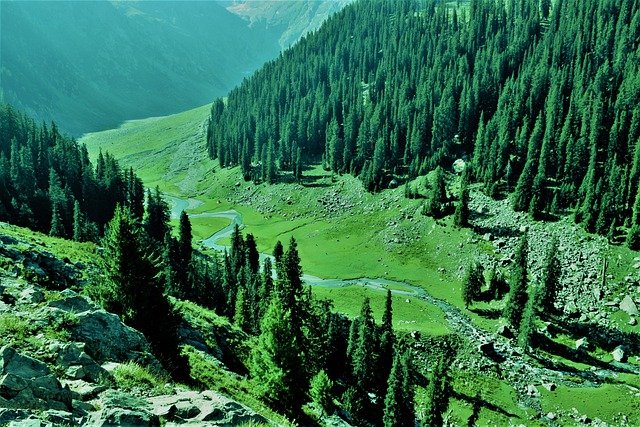Introduction:
A national park is not the typical park with fences, swings, and gardens. A national park is often a government-owned land reserve. Its principal goal is to preserve and conserve endangered species of flora and animals. There are approximately 6,555 national parks worldwide. There are 21 parks in Pakistan out of a total of 6,555. These national parks comprise around 29,589 km2, or approximately 3% of the country’s total size (10,060,96 km2). Lal Sohanra National Park was Pakistan’s first national park. It was founded in 1972 to protect endangered animals from poaching and environmental threats.
Check out: Endemic or Native Fauna and Flora of Pakistan
Some of the national parks of Pakistan are:
-
Central Karakoram National Park
Central Karakoram National Park, also known as the Karakoram National Park, is located in Pakistan-administered Gilgit-Baltistan. The park, which spans 10,000 square kilometers over five districts in G-B, is a natural habitat for over ten types of wild animals and twelve unique bird species. The marmot, snow leopard, markhor, ibex, blue sheep, brown bear, musk deer, Tibetan wild ass, and wolf are among the endangered species. Sea wormwood, Astragalus gilgitensis, Fragaria nubicola, Geranium nepalensis, Kashmir balsam, Thymus linearis, white clover, Rubus irritans, Taraxacum Karakorum, and Taraxacum affinis are among the smaller shrubs and plants associated with these populations.
-
Deosai National Park
Deosai Plains are home to the ibex, red fox, golden marmot, wolf, Ladakh urial, snow leopard, and a variety of migratory and resident birds. Brown bear, Snow leopard, Himalayan Musk deer, Golden marmot, Pika and Ermine are among the mammals found in the park. Deosai’s flora is affected by four primary floristic elements: boreoalpine and circumpolar; euro-Siberian; southern European/Mediterranean; and Siberian-Mongolian, and it is home to hundreds of medicinal and fragrant plant species.
-
The Hingol National Park
The park contains the Hingol River estuary, which is home to a wide variety of bird and fish species. In the first surveys, 250 plant species were identified, including seven that have yet to be documented. Many more species have yet to be discovered. In the first surveys, 250 plant species were identified, including seven that have yet to be documented. Many more species have yet to be discovered. Kandi (Prosopis cineraria), Kikar (Acacia nilotica), Ber (Zizphus nummuleria), Mesquite (Prosopis juliflora), and other species are common in the region.
Check out: Tracing the Routes of Migratory Birds in Pakistan and Migratory Birds and Flyways of Pakistan – Location, Seasons.
-
National Park of Khunjerab
Khunjerab National Park is a high-altitude park in Pakistan’s Gilgit Baltistan area. It is regarded as one of the world’s highest altitude parks. Many endangered and threatened animal species call it home, including the Snow Leopard, Marco Polo sheep, and Himalayan Ibex.
Also check out: 7 Must See Beautiful Natural Phenomena in Pakistan
-
National Park of Lal Suhanra
Lal Suhanra National Park is located in the Pakistani province of Punjab. It is one of South Asia’s largest national parks, with a diverse range of landscapes. Several animal species may be found throughout the area. Among these are desert wild creatures such as Asiatic wildcats, rabbits, bustards, and deer. The monitor lizard, Russell’s viper, Indian cobra, saw-scaled viper, wolf snake, John’s sand boa, and spiny-tailed lizard are among the reptiles found in the park.
Park’s flora includes 212 species from 162 genera and 50 families. The Dicots were the most diverse and dominant group of plants in this area, with 41 families, 118 genera, and 158 species, followed by Monocots with 5 families, 40 genera, and 50 species, Pteridophytes with 3 families, 3 genera, and 3 species, and Bryophytes with monotypic species. Poaceae was the most numerous families, with 43 species, followed by Fabaceae, Asteraceae, Chenopodiaceae, Euphorbiaceae, Boraginaceae, Amaranthaceae, Aizoaceae, Cucurbitaceae, Mimosaceae, and Solanaceae, Capparaceae, Caryophyllaceae.
-
National Park Hazar-Ganji Chiltan
Another gorgeous national park of Pakistan, hazar-Ganji chiltan national park, is located in one of the most isolated and arid districts of Balochistan. Some of the region’s rarest creatures have natural homes in the park. Suleiman markhor urial sheep, indian wolf, chiltan ibexes, striped hyena, houbara bustard, griffon vulture, monitor lizard, and Russell’s viper are some excellent examples. this national park is 155 square kilometers in size.
You might also be interested in: Impact of Gemstone Mining and Illegal Trade from Pakistan
-
Ayubia National Park
Ayubia national park is located at an elevation of approximately 8,000 feet (2400 meters) above sea level. this makes it one of Pakistan’s largest wildlife sanctuaries. Ayubia was designated as a national park by the international union for the conservation of nature (IUCN) in 1984. The park is famous for its biodiversity. It is home to some of Pakistan’s most unusual wildlife, including the golden eagle, Himalayan griffon vulture, honey buzzard, peregrine falcon, Indian sparrow hawk, hill pigeon, spotted dove, Asiatic leopard, black bear, yellow Kashmir hill fox, and flying squirrel.
8. Margalla Hills National Park
Margalla Hills National Park is located in Islamabad. This national park constitutes Margalla Hills, Shakarparian and Rawal Lake. This area is rich in flora and fauna. Leopards, Chinkara, jackals, fruits bats and flying foxes etc. along with a lot of bird species are commonly found in this area of thick chir pine forests with boast around 600 more plant species. It is an ecologically important area, however due to the vast number of tourists that visit it, it faces some really serious issues more information about which can be found in the following article: Impact of Human Activities on Margalla Hills National Park
You might also like: 30 Beautiful Birds Of Pakistan Pictures – Bird Biodiversity
Issues faced by National Parks:
-
Climate Change
Climate Change is one of the issues confronting Pakistan’s national parks. If the Earth’s climate continues to change as experts expect, the national parks will suffer along with the rest of the globe. Glaciers may melt.
-
Concerns About Water Resources
Some parks are already feeling drier as increased human demand depletes resources on which aquatic creatures rely. Read: Can Rivers & Lakes be Saved from Environmental Degradation?
-
Air Pollution
Smog from adjacent cities might pose problems for the parks. They can obstruct vistas, injure plants and wildlife, and deplete water sources. It can also repel human visitors and cause complications for them.
-
Tourist Attraction:
Overcrowding is a problem in certain parks, but not in others. In other less-known parks, there aren’t enough people to maintain the park. Look for a variety of little parks to visit, not just the major ones. The little ones are also entertaining! Many people snowmobile, ski, mountain bike, and participate in other activities in the most well-known parks, such as Yellowstone. This improves the park’s experience in certain areas while detracting from it in others. For more info: Environmental Damage Due to Tourism Industry of Pakistan
Conclusion:
The primary purpose is to safeguard the country’s most valuable and endangered animal species while also maintaining the country’s key representative ecosystems.
Also Read: Illegal Wildlife Trade in Pakistan – Threat to Endangered Species
I hope you all liked this post! Please comment below if you have any suggestions, comments, or feedback! We at #envpk love hearing from our readers! Thanks!




